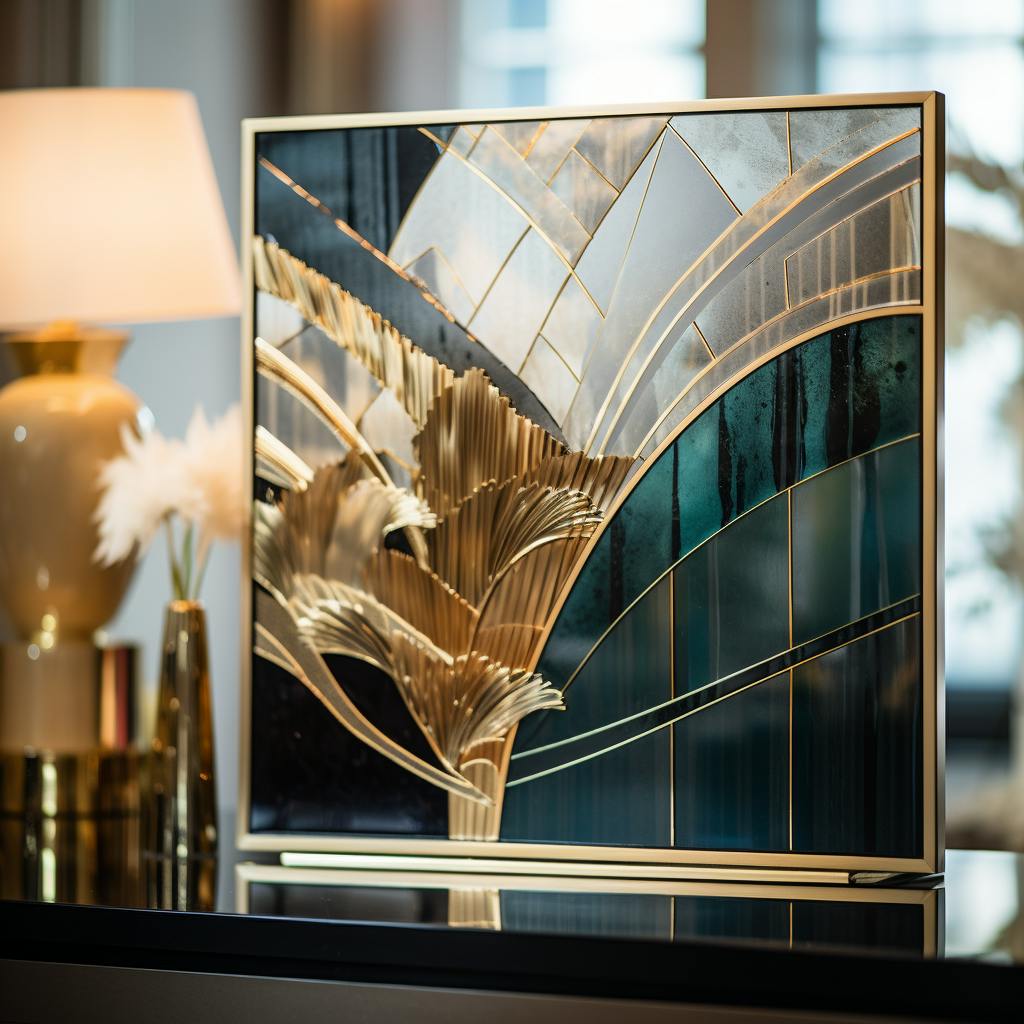We may earn compensation through affiliate links in this story.
verre églomisé use in cabinet door fronts
verre églomisé is a traditional technique for adding metal leaf to glass. Before techniques were developed to silver glass and make “mirror” (as we now know it) verre églomisé was used to give glass surfaces the same depth and reflective quality.
In fact, the history of verre églomisé dates back to the early 1700s when it was most often used to decorate glassware or windows.
Today, verre églomisé is used as a decorative touch in high-end interiors projects and restoration projects.
The Shortlist...
In This Article
What Is Verre Eglomise?
Verre Eglomise Wall Mirror
Verre Eglomise is a traditional technique for creating handcrafted mirrors. When employing this method, craftspeople would apply gold leaf to the rear side of a piece of glass in order to create a mirrored panel. Oftentimes, the artisan would render an ornate design or even a silhouette portrait within the gold leaf.
(Verre eglomise was the precursor to the antiqued mirror you see today. )
These mirrors were in fashion during the 1700s and 1800s as well as the early 1900s.
Unfortunately, we don’t see as many Verre Eglomise mirrors today. This is likely due to the fact that the mirrored panels aren’t as reflective as the mirrors we have today. They’re far more decorative than they are functional.
While these mirrors fell out of fashion during the last century, we’ve seen a recent resurgence among antique collectors and vintage furniture connoisseurs. Even some artisans have taken up the technique, creating Verre Eglomise mirrors with a modern twist.
How Verre Eglomise Is Made
The process of making verre eglomise requires skill and some specialized tools.
That said, it is something most DIYers can at least attempt. Below are a few youtube tutorials that I thought were very good at showing the process of applying leaf to glass.
Once you have the basic technique down, you can use many different types of metal leaf to achieve different looks. So if you are a creative person, it’s an interesting area to explore.
Youtube Tutorials That Explain How to Leaf Well
Another Good Tutorial
Verre Eglomise In Design & Restoration
Verre eglomise is typically used as mirror material for accents in furniture, such as cabinet door fronts or backslashes. This material shines in restoration projects where the aim is to preserve the techniques and methods of the original constructions.
In addition, verre eglomise is still used in decorative sign making where it is employed to create the vintage styles seen in bars and posters from the 1920s and before.
another example of a verre eglomise detailed image
Verre Eglomise Cost
Verre eglomise is one of the most expensive types of mirror you can buy. Depending on the leaf material, design, and other considerations (like shape, notches and holes) the cost can vary, but regardless its you should expect to pay a premium for this type of material.
Meticulously crafted with precious metals, known for opulence.
Vintage charm with aged appearance, desirable for antique look.
Cost-effective with versatile designs and colors.
Consider your budget and design preferences when choosing decorative glass and mirror products.
$200 psf
Verre Eglomise Complexity And Timing
Verre eglomise is made by hand and requires a very specialized skill, so that alone is enough to make it much more complicated than other kinds of glass and mirror work. The limited number of glass artists, variation in leaf and design options also make the process much more complicated than traditional mirror projects, including more decorative applications, like antique and glue chipped mirror.
Reasons for Complication: Handmade, Material Selection Process, Design Selection Process, Extremely Fragile for Shipping
24 weeks
Verre Eglomise Project Timeline
More Articles About Verre Eglomise
A few articles we think you will be interested in
Glass & Mirror Guides Archives – MirrorCoop
Glass & Mirror Guides · Verre Eglomise [March 2021] · How To Hang A Mirror
With D Rings · How To Fix A Cracked Mirror [February 2020] · How To Repair A
Mirror …
Finding antiqued mirror tiles – your guide to finding the best antiqued …
Jun 8, 2018 … There are many ways to “antique” mirror — including something called verre
eglomise — though they all result in a mirror finish that has a …
How To Hang A Mirror With D Rings – MirrorCoop
Feb 28, 2021 … Glass & Mirror Guides · Verre Eglomise [March 2021] · How To Hang A Mirror
With D Rings · How To Fix A Cracked Mirror [February 2020] …
Round Antiqued Mirror – Editor Approved – 9 of Our Favorite Wall …
Jan 18, 2019 … Verre Eglomise [March 2021] · Best Glazier’s Tape [August 2020] · Start Here |
About Mirror Coop | Contact Us | Mirror Tiles + Sheets
“



